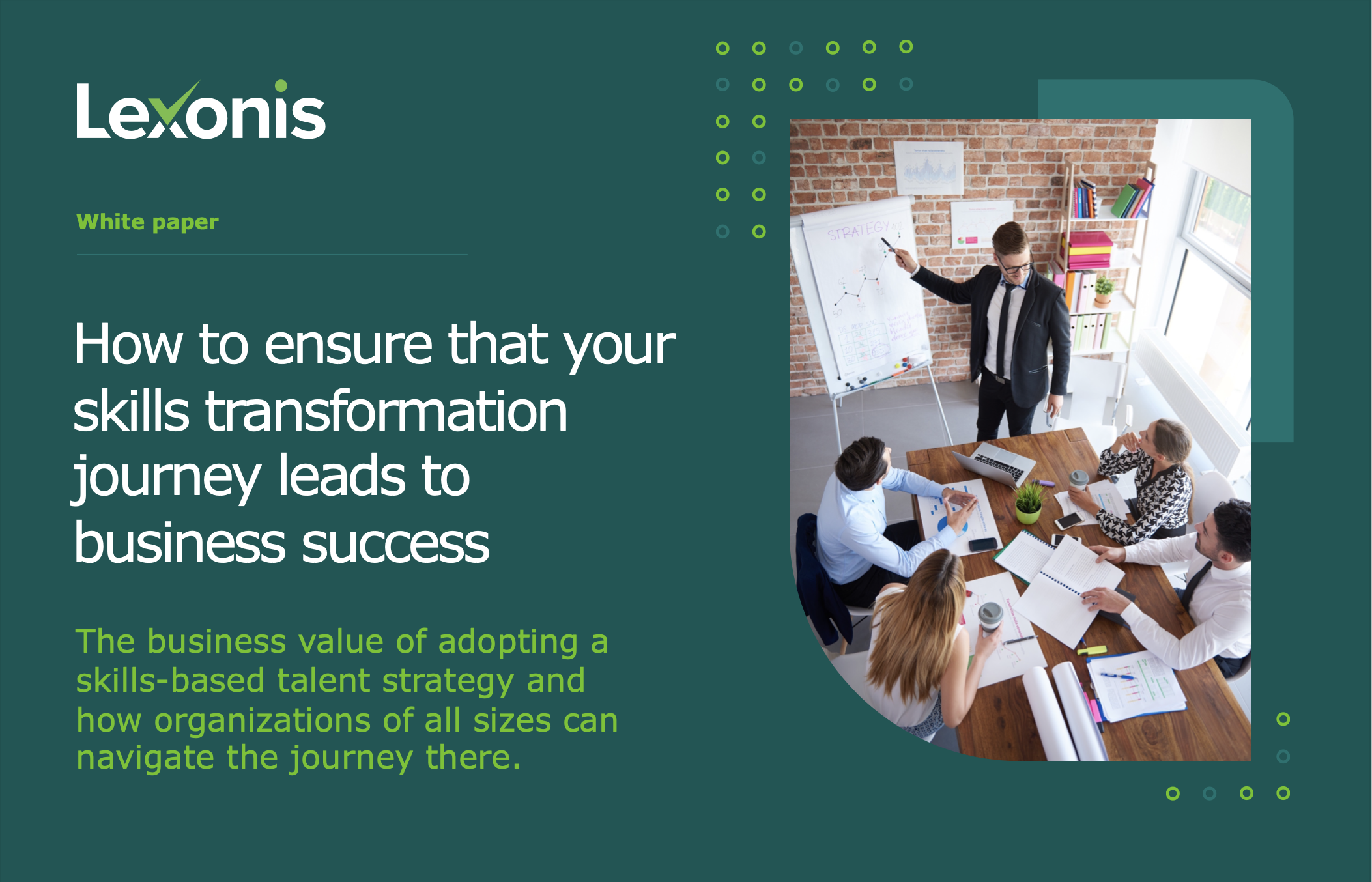Connecting the Dots: How to Align Learning and Development with Business Goals for Maximum Impact
Andy Andrews
Introduction
“Mapping learning to business goals is the No.1 priority” – that’s a top line heading in LinkedIn’s Workplace Learning Report 2023!
Aligning learning and development programs with the organisation’s strategy is nothing new as a subject, however we are living in increasingly fast-paced and dynamic times from a business perspective and there is no doubt that organisations need to be agile and adaptable to survive and thrive. For instance, the same LinkedIn report cites that skill sets have changed by around 25% since 2015 and by 2027 that number is expected to double.
How can an organisation ensure that as business-critical skills change, it remains competitive and successful? One key way to achieve this is by aligning learning and development with business goals. But how can this be done? The answer lies in understanding and leveraging the skills of employees.

Skills at the Heart
At Lexonis, we believe that skills (and competencies) are the foundation of organisational success. They define what employees can do, what they are good at, and what they need to improve on. By identifying and developing the right skills, organisations can align learning and development (L&D) with business goals and create a workforce that is ready to meet the challenges of today and tomorrow.
Here are some ways in which skills can be used to align learning and development with an organisation’s business strategy:
- Understand the business strategy and goals
A well-designed business strategy will provide a clear direction for the organisation. It will identify the key areas where it can create a competitive advantage and provide a framework for making decisions about resource allocation and investing in new capabilities. The business strategy provides the organisation with a plan of action designed to help it achieve its business goals and objectives.
It follows that the first step for the L&D function is to understand what the business strategy actually is and how it relates to business goals. This necessarily means that L&D needs to have a seat at the executive table – a subject and blog post for another time – but encouragingly the 2023 LinkedIn report indicates that 50% of L&D professionals now work closely with executive leadership which is a significant increase over the 2022 figure (43%).
- Identify the skills needed for success
The next step in aligning L&D with business goals is to identify the skills that are needed for success. Typically, this is done through the lens of the organisation’s job roles (also known as job skills profiles), via the functional areas of the organisation. Which skills and competencies does an individual need to be successful in their role?
Let’s take an example, imagine that one of your organisation’s business goals is to build resilience against cyber-attacks. Which skills and competencies would our Cybersecurity Specialists require to achieve that?
Taking the Cybersecurity example further, if an organisation is looking to strengthen its ability to protect itself against cyber-attack, it will need employees with skills that support:
- Implementing and employing tools and processes to monitor and resolve security vulnerabilities and hacking threats in network and host systems.
- Planning and conducting security audits, risk assessments, digital forensics and penetration testing in network and host systems.
- Monitoring and evaluating new cybersecurity threats and partnering with external vendors, security experts and advisors to assess risk to systems.
- Maintaining and implementing information cybersecurity standards, processes, procedures and policies for the enterprise.
- Working closely with the organisation to understand advanced cyber threats and to disseminate strategies to protect those networks.
- Identifying, developing and sharing new skills and competencies based on business and cybersecurity direction.
It is easy to forget the vital role that competencies and behaviours play for successful performance in the role. For instance, ‘Accuracy and attention to detail’ would appear to be a good competency for a Cybersecurity Specialist. Consider competencies and behaviours required at an organisational level as well as the individual level (also see “PowerSkills” by Josh Bersin.)
By identifying these skills and competencies, the organisation can create targeted learning and development programs to develop their employees in these areas in the knowledge that they are truly business critical.
(For reference, see LinkedIn’s Workplace Learning Report 2023 pages 11 and 12, for examples of “Most in-demand skills by function”.)
- Assess current skills and identify business-critical gaps
Once the required skills have been identified, the next step is to assess the current skills of employees and identify any gaps in relation to their job role requirements. This can be done through skills assessments, for instance using tools such as Lexonis TalentScape.
This approach requires a well-constructed skills framework that defines each skill and competency clearly and consistently but also provides levels of proficiency which can be used to determine an individual employee’s degree of demonstrable expertise. The IBM Talent Framework library available from Lexonis is an excellent example of a skills taxonomy ideally suited for this purpose.
There are many methods of assessment. Our experience at Lexonis tells us that simpler methods, tools and processes work best and are more easily embedded in the organisation. More specifically, for employees (in contrast to recruitment candidates), self-assessment, multi-rater feedback and manager validation work better than testing tools.
By capturing gaps using the steps described above, organisations can identify and create or procure targeted learning and development activities to close them.
Extending the Cybersecurity example further, if an organisation identifies a gap in the ‘Security Incident Management’ skill, it can create or procure a learning and development activity to help employees develop this particular skill.
- Develop a skills-based learning and development strategy
With the required skills identified and gaps identified, the next step is to develop a skills-based learning and development strategy. This can be done in the knowledge that by following the previous steps, the learning and development strategy will be fully aligned with the organisation’s business strategy and help to keep the focus on developing skills that are needed for success.
For example, if an organisation is focused on Cybersecurity, its learning and development strategy may include programs on identity and access management, data loss protection and risk management. By doing so, the organisation can build its cyber resilience if this has been identified as a key business goal.
- Create a culture of continuous learning
To align and embed learning and development with business strategy and goals, organisations must create a culture of continuous learning. This means encouraging employees to take ownership of their own learning and development, providing opportunities for learning and development and rewarding employees who invest in their own development.
By creating a culture of continuous learning, organisations can ensure that employees are equipped with the skills they need to succeed and can adapt to changing business environments. This can also lead to increased employee engagement, improved attraction and retention rates and a more agile and adaptable organisation.
Conclusion
To ensure that your organisation’s learning initiatives are effective for your business, it is vital to align them with necessary business-critical skills, that is, skills that are critical for successful performance and that align with the organisation’s business strategy . Rather than just measuring the hours of learning and course completion rates, it’s ever more beneficial to identify the specific skills that are lacking within your organisation. By having this clarity, your L&D team can design a skill-building program that’s perfectly synchronised with your organisation’s business strategy.
You may also like

There is a skills gap problem in the developed economies…

The business value of adopting a skills-based talent strategy and…

What is trending in workplace L&D this year? Are your…